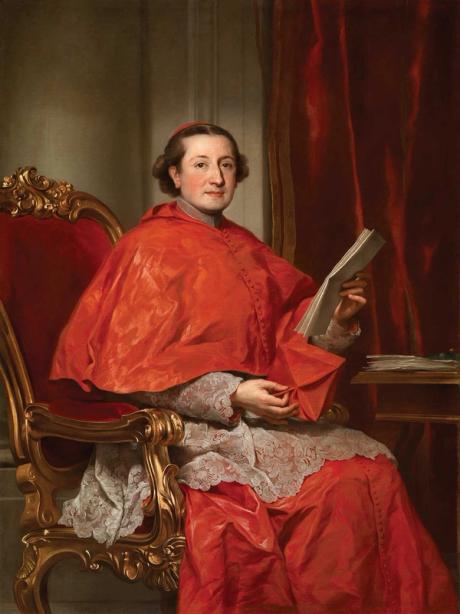
The challenges facing today’s trade in Old Master works are well known and much repeated. The supply is dwindling, they aren’t “relatable” to this day and age, there are condition and attribution issues, they are unreliable investments, they just aren’t cool… and so on.But as specialists digest the results from the latest December week of Old Master auctions in London and look forward to January for the New York auctions and Manhattan dealers’ Master Drawings programme, as well as The European Fine Art Fair (Tefaf) in Maastricht in March, it is worth considering how dealers in historic art are trying to—and still might—pull this market out of its supposedly irreversible decline.“There are probably no more than 200 great quality paintings left in private hands, and the supply is undergoing continual attrition,” says Todd Levin, a New York-based art adviser who is one of the few in his profession with a knowledge of both new and Old Master art. “By contrast, the supply of contemporary art is expanding all the time, and exciting young artists are yet to be discovered,” he adds.Stylish presentation and compelling storytelling are the keys to selling historical artBut the dynamics of discovery have become as important a driver of demand for Old Masters as they are for ultra-contemporary art. Just as collectors and speculators are always on the lookout for flippable paintings by the next hot young name, specialists in historic art are scouring auction websites for undercatalogued “sleepers”.Clearly, at least two knowledgeable bidders had seen the potential of The Adoration of the Kings, a small panel attributed to the “circle of Rembrandt” that sold for €860,000 (including fees), or 86 times its low estimate, at a Christie’s online auction in 2021. This little nocturne reappeared at Sotheby’s 6 December Old Masters evening sale in London as a “rediscovered Rembrandt masterpiece”, dated to the artist’s youthful years in Leiden in the 1620s and guaranteed to sell for at least £10m.But such canny discoveries can have a ceiling. On the night, the third-party guarantor was the only bidder at a hammer price of £9.5m (£11m with fees) for the Rembrandt masterpiece. Similarly, the following day at Christie’s, a pair of hitherto unknown Canaletto views of Venice from the 1730s, recognised by knowledgeable specialists as examples of this famous 18th-century artist operating at the peak of his powers, could muster only one bidder beyond the guarantor. The hammer fell at £8.2m (£9.7m with fees)—toward the low end of the £8m-to-£12m estimate range.Top-heavy tradeEight-figure estimates inevitably deplete any buying pool. But if dealers in historical art can unearth and add value to exceptional pieces, they can still sell for substantial sums to museums and a select base of wealthy private collectors, usually at (or after) prestigious art fairs. Since the demise of both the Masterpiece fair in London and Tefaf’s second New York fair in autumn (the spring edition soldiers on), Tefaf Maastricht in March and Frieze Masters in London in October have become the Old Master trade’s crucial events.“The middle and lower market in Old Masters is out of fashion, but the top is very strong,” says Salomon Lilian, a Geneva-based Old Master gallerist who is a regular exhibitor at both Tefaf Maastricht and Frieze Masters. “The billionaires come to Frieze Masters and they buy. London is easy and everyone likes it. Tefaf is more centred around the museums, but the logistics of Maastricht are a problem. It’s difficult to get to, and the hotels aren’t great.”Lilian exhibited the 3.4m-wide early 17th-century allegorical canvas The Triumph of Neptune with the Fruits of the Sea (1637), by the Antwerp painter Paul de Vos, at Tefaf Maastricht in March without success. Seven months later, he managed to sell the monumental painting at Frieze Masters to a European private collector for a price between €600,000 and €800,000.Although dealers point out that the private collecting base for Old Masters at Tefaf Maastricht has diminished in recent years, they also say the attendance from institutions and their patrons is bigger than ever.“Tefaf has upped the ante in terms of museums over the last five years,” says Stuart Lochhead, the London-based European sculpture dealer who in 2020 brought a spectacular late 13th-century Giovanni Pisano ivory of the crucified Christ to his specially designed stand at the fair. Its acquisition, for €2.45m by the Musée de Cluny in Paris, was announced by France’s Ministry of Culture in March 2023.Lochhead says: “There are more museums bringing groups of trustees who help buy things. This year I had the director of an American museum, its chief curator and the head of acquisitions on my stand at the same time. You don’t get meetings like this anywhere else.”Still, even these successes come with drawbacks. “We’re dealing in fewer things just at the high end without relying on a wider collecting base. It seems to work,” Lochhead adds. “The private collectors are disappearing.”So where does that leave Tefaf exhibitors specialising in lower-priced items that don’t appeal to the curators and patrons of top museums?“It’s a tough, tough job,” says Ambrose Naumann, a young New York-based private dealer. He created a much admired booth of 11 paintings by talented but long overlooked early 20th-century artists, each of which was priced under $200,000, in the Showcase section for emerging gallerists at Tefaf Maastricht in 2023.“Tefaf is a legitimising fair, but it’s very expensive, and as a young dealer you have to make a profit,” Naumann says. He and many other smaller gallerists face all-inclusive costs of between £50,000 and £100,000 to exhibit at the Dutch event. Naumann says he did not sell any works at the fair itself but did make three sales afterwards that helped cover his costs.Sensitive to the expense of exhibiting at the fair, Tefaf Maastricht’s organisers have cut the 2024 edition to seven days rather than ten (including previews). But the few younger dealers trying to make their way in the Old Master trade would benefit more from a fair like the popular Paris Internationale, where serious emerging contemporary gallerists pay modest rates to exhibit in a different signature building each October, while visitors are given free entry.Selling storiesParis Internationale, like Tefaf, is a fair run by dealers for dealers, but the French fair effectively promotes the affordable end of the contemporary market. At the other end of the price spectrum, many of the Old Master trade’s more enterprising dealers stress that stylish presentation and compelling storytelling are the keys to selling historical art.Though technically brilliant, Anton Raphael Mengs’s 1751 portrait of Friedrich Christian, whose paralysed foot elicited calls for him to renounce his succession rights as Prince of Saxony, is not the most obviously commercial painting. But after the London dealership Agnews gave it pride of place on its stand at Tefaf Maastricht in March 2023, with a $1.8m price and a moving, exhaustively researched 86-page catalogue chronicling the history of the painting and the prince’s struggle to overcome his disability, the portrait was bought by the Getty Museum in Los Angeles.Nicholas Hall, the New York-based Old Master dealer, says this Getty purchase helped give a contemporary art collector the confidence to buy Mengs’s even less obviously commercial Portrait of Cardinal Carlo Rezzonico (1758-59), which was included in the museum-quality exhibition The Hub of the World: Art in Eighteenth-Century Rome, at Hall’s Manhattan gallery in autumn 2023.“The buyer had never heard of Mengs,” says Hall, “but the painting’s symphony of reds appealed to him. ‘This seems modern to me,’ he said.” That ecclesiastical portrait by Mengs, priced in the region of $750,000, was one of 12 works in the show that sold for between $5,000 and $1.5m, according to Hall.The Old Master trade still sustains healthy price levels for high-quality works, particularly by trophy names. Sotheby’s had itself guaranteed the sale of the very formal Velázquez portrait of Isabel de Borbón, Queen of Spain, originally scheduled to headline its January Old Master auctions in New York with an estimate of $35m. (The work was later withdrawn due to “ongoing discussions” among the owners.) But what about the market for the works of ordinary quality?Auctions like Christie’s 125-lot Old Masters Part II sale in London on 8 December give one answer. One-third of the paintings, drawings and sculptures failed to sell, and below-estimate bidding was the norm. A hammer price of just £3,800 (£4,788 with fees) secured a vanitas still life, featuring a skull atop an inverted crown, by the 17th-century Dutch painter Edwaert Collier. Estimated at £30,000 to £50,000, but sold without reserve, this painting was perhaps the most shocking of the bargains to be had in the auction; it had been acquired by the seller at auction in 1998 for $61,189, according to Artprice.The middle and lower ends of the trade in historic pictures are in serious need of reinvigoration and reinvention. How about an Affordable Old Art Fair?
























